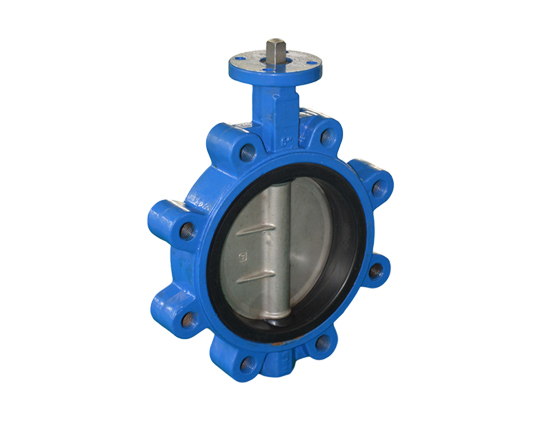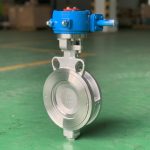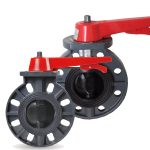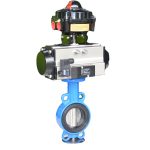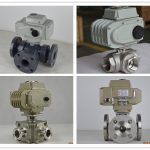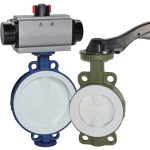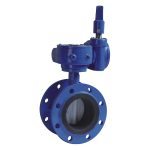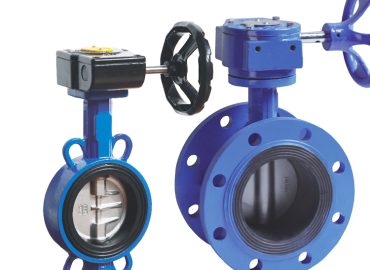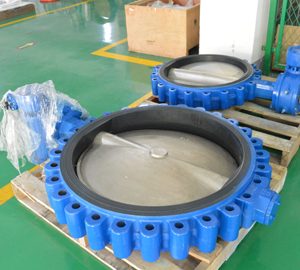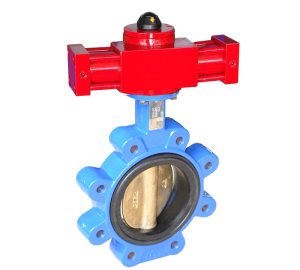A lug butterfly valve is a type of quarter-turn valve that is commonly used in industrial applications to control the flow of different types of fluids, including gases, liquids, and slurries. The valve’s name comes from the design of its mounting mechanism, which uses “lugs” or threaded inserts to attach the valve to pipes. The operation of the valve is based on the rotation of a disc, similar to a ball valve, which controls the flow of fluid passing through the pipe. Lug butterfly valves have become increasingly popular in recent years due to their relative simplicity, ease of operation, and low maintenance costs. In this post, we’ll take a closer look at the anatomy and functionality of lug butterfly valves, and explore their wide range of applications.
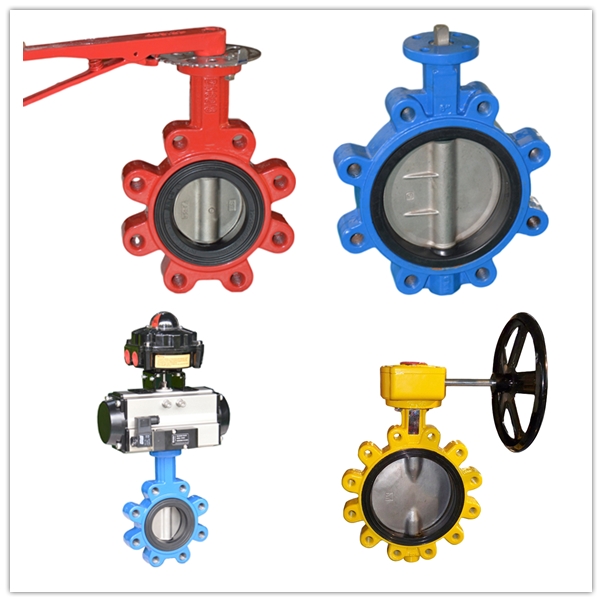
Introduction
A lug butterfly valve is a type of valve that controls the flow of liquid or gas through a pipeline. It is designed to fit between two flanges and features two lugs (protrusions) on either side of the valve body. These lugs are used to attach the valve to the pipeline using bolts, making installation and maintenance a breeze. Unlike other valves, lug butterfly valves do not require specialized mounting kits, which can be time-consuming and complicated to install. The valve itself consists of a disc-shaped “butterfly” that rotates around a central axis to control the flow of fluid. When the valve is open, the disc is rotated parallel to the flow, allowing fluid to flow freely. When the valve is closed, the disc is turned perpendicular to the flow, blocking the flow of fluid. Lug butterfly valves are known for their simplicity, which makes them easy to operate and maintain. They are also incredibly efficient in the way they control fluid flow, which adds to their popularity in industries like chemical processing, food and beverage production, and water treatment.
Explanation of what a lug butterfly valve is
Lug style butterfly valve is a quarter-turn valve which is utilized for isolating or regulating the flow of fluid or gas inside a pipeline. Unlike other types of valves that require additional mounting hardware, a lug butterfly valve can be directly bolted between two flanges in a piping system with the use of its protruding lugs. The valve features a circular disc located inside the valve body, which rotates on an axis in order to control the flow of fluid. This disc is also known as the butterfly due to its shape. When the valve is open, the disc is positioned parallel to the pipeline, allowing maximum flow. However, when the valve is closed, the disc will rotate 90 degrees and cut off the flow of fluid. The simplicity and ease of use of lug butterfly valves make them cost-effective and ideal for a variety of applications including HVAC, chemical processing, and water treatment.
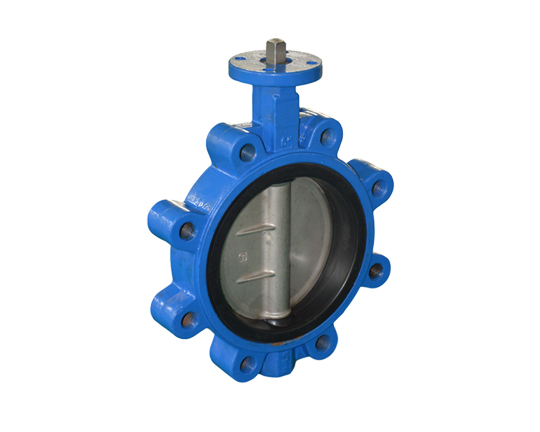
Anatomy of a Lug Butterfly Valve
Lugged butterfly valve has several components that make up its basic anatomy. These components include the valve body, disc, stem, shaft, seat, and various seals. The valve body is the outer casing of the valve, and it is generally made of cast iron, stainless steel, or carbon steel. The disc, also known as the butterfly, is a circular plate located inside the valve body, which rotates around a central axis to control the flow of fluid. The disc can be made of metal, plastic, or other materials, and it is usually lined with rubber, PTFE, or other materials to improve sealing and durability.
The stem is the shaft that connects the disc to the outside of the valve body. The stem is typically made of stainless steel, and it is designed to withstand the pressure and torque of the valve operation. The seat is the area where the disc meets the valve body, and it is responsible for providing a tight seal to prevent leaks. The seat can be made of rubber or other materials, and it is replaceable in case of damage or wear. Finally, there are various seals located throughout the valve, including O-rings and gaskets, which prevent fluid from leaking out through the valve stem or other openings. Proper maintenance and replacement of these seals is essential to ensure proper valve operation and prevent leaks. By understanding the anatomy of a lug butterfly valve, it is possible to appreciate its simple yet precise design and to identify potential issues that may arise with use.
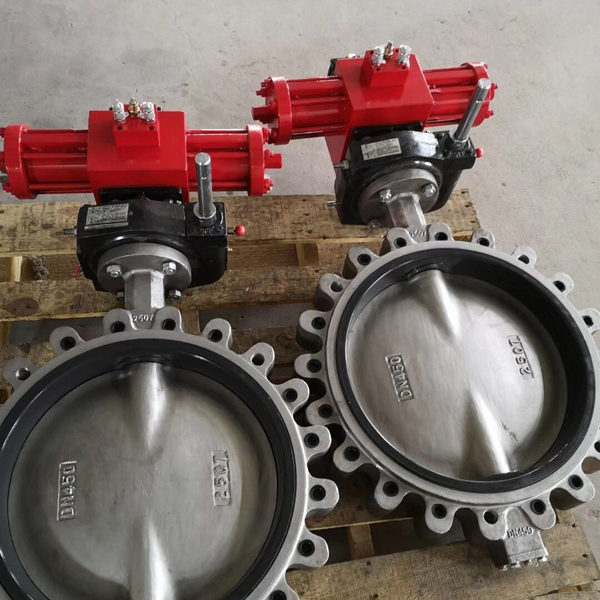
Detailed explanation of the different parts of a lug butterfly valve
The different parts of a lug style butterfly valve include the valve body, disc, stem, shaft, seat, and seals. The valve body is the outer casing of the valve that houses the other components. It can be made of various materials, including cast iron, stainless steel, or carbon steel, and it has flange connections that allow it to be bolted to a pipeline. The disc is a circular plate located inside the valve body, and it rotates on a central axis to control the flow of fluid. The disc can be made of various materials and lined with a seal to ensure a tight fit against the seat. The stem is the mechanical component responsible for connecting the disc to the valve’s control mechanism.
Typically made of stainless steel, the stem is designed to withstand the pressure and torque of the valve operation. The shaft is the part of the stem that extends beyond the valve body and allows attachment to the valve actuator. The seat is a rubber or plastic material located at the point where the disc meets the valve body. It provides a tight seal to prevent leaks when the valve is closed. Finally, seals such as O-rings and gaskets are essential to ensure proper valve functionality and prevent leaks. Understanding each part of a lug butterfly valve is essential to gain a complete picture of how the valve operates and how to properly maintain it.
How each part contributes to the overall functionality of the valve
Every part of a lug butterfly valve contributes to its overall functionality. The valve body, stem, and shaft provide a sturdy framework that supports the other components and allows for the valve to be actuated. The disc, which rotates to control the flow of fluid, is lined with a variety of materials that ensure a tight seal against the seat to prevent leaks. The seat, located at the point where the disc meets the valve body, is responsible for providing an effective seal for the valve when it is closed. The seals, located at various points throughout the valve, prevent fluid from leaking out through the valve stem or other openings. Each part of the valve has a unique function, and when working together, they create a reliable and efficient flow control solution. Understanding how each component works and how they all contribute to the overall function of the valve is essential to ensure proper valve operation and prevent issues with fluid leakage, valve sticking, or valve failure.
How Lug Butterfly Valves Work
Lug butterfly valves utilize a simple yet effective design to control the flow of fluid or gas in a pipeline. The valves contain a circular disc known as the butterfly, which is located inside the valve body. The disc rotates 90 degrees on a central axis, allowing fluid to pass when the valve is in the open position and blocking the flow when the valve is in the closed position. When the valve is fully opened, the butterfly disc is parallel to the pipeline, and fluid flows freely through the pipeline. When the valve needs to be closed, the butterfly disc is rotated 90 degrees perpendicular to the pipeline, covering the opening and effectively shutting off the flow of the fluid.
The disc is connected to a stem and shaft, which protrude from the valve’s body and allow for manual or automatic actuation of the valve. These stems and shafts can be connected to a handle, gearbox, or actuator to control the valve’s position. When the actuator turns the stem and shaft, the disc inside the valve rotates along with it. This rotation causes the disc to move between the open and closed positions. The seat, which is located at the point where the disc meets the valve body, helps ensure a tight seal to prevent any leakage of fluid through the valve. Overall, the simplicity and ease of use of lug butterfly valves make them ideal for applications requiring quick flow control, minimal maintenance, and reliable performance.

Step-by-step explanation of how a lug butterfly valve opens and closes
The operation of a lug butterfly valve is simple and straightforward. To open the valve, the actuator (which can be a handle, gearbox, or motorized actuator) is turned to rotate the stem and shaft. As the shaft rotates, the disc inside the valve rotates along with it, moving from the closed position to the open position. In the open position, the disc is parallel to the pipeline, allowing fluid to pass through the valve with a minimal pressure drop. When it’s time to close the valve, the actuator is rotated in the opposite direction, causing the disc inside the valve to rotate 90 degrees and become perpendicular to the pipeline. In the closed position, the disc completely blocks the pipeline, preventing fluid from passing through the valve. The seat, located at the point where the disc meets the valve body, helps ensure a tight seal to prevent any leakage of fluid through the valve. The key advantage of a lug butterfly valve is that it can be closed tightly with minimal effort or force, making it a cost-effective and efficient solution for flow control in a variety of settings.
Animation or video to help visualize the process
Animations or videos can be highly effective in helping to visualize the process of how a lug butterfly valve opens and closes. Animation or video can show a clear and realistic view of the internal components of the valve and the actions that occur as the valve is actuated. For example, an animation could show the position of the disc, stem, shaft, and seat inside the valve body, as well as the pressure of the fluid moving through the pipeline. The movement of the valve’s actuator could also be demonstrated, making it clear how the disc rotates in response to the turning of the stem and shaft. Complex engineering concepts can be more effectively understood when visualized through an animation or video, helping viewers learn how the valve works in real life scenarios. Animations or video serve as useful educational or training tools for engineers, technicians, or other professionals, allowing them to better understand the basics of lug butterfly valves and, in turn, manage the design, installation, and maintenance of these valves more effectively.
Types of Lug Butterfly Valves
There are several types of lug butterfly valves available on the market, each with its own distinct advantages and disadvantages based on the specific requirements of an application. One of the primary distinctions between types of lug butterfly valves is the manner in which they’re constructed. For instance, concentric and eccentric designs are the two main types of lug butterfly valves. Concentric valves have a centered disc, which rotates around a central axis that coincides with the pipe axis. This design ensures an even load distribution and reduces wear on the valve during operation. Concentric valves are typically used in low-pressure systems, such as HVAC or water distribution. Eccentric valves, on the other hand, have a disc that’s off-center from the pipe axis.
This design allows for a tighter seal between the disc and seat, making these valves ideal for high-pressure applications. Another type of butterfly valve is the double-offset valve, which is designed to reduce wear and tear during opening and closing operations. This valve consists of a disc that’s offset from the central valve axis and from the sealing element, reducing the amount of friction between the two. High-performance butterfly valves are also available, which have a higher level of sealing capability, as they’re constructed with enhanced materials such as ceramic liners, metal seats, and triple-offset configurations. Ultimately, the choice of which type of lug butterfly valve to use will depend on the specific requirements of an application, such as the level of pressure and fluid, valve size, operating temperature, and level of expected wear and tear.
Discussion of the different types of lug butterfly valves including concentric and eccentric
Lug butterfly valves come in two main types: concentric and eccentric. Concentric valves have discs which rotate around a central axis that is aligned with the pipe axis, creating an even weight distribution, and thus reducing wear and tear during operation. These are typically used in low-pressure systems such as HVAC or water distribution. Eccentric valves have a disc which is off-center from the pipe axis and therefore creates a tighter seal between the disc and seat. This type of valve is generally better suited to high-pressure applications due to its superior sealing capability. There are also double-offset and high-performance butterfly valves, both of which offer increased sealing capabilities compared to the basic models. The right type of lug butterfly valve for an application should be chosen based on a variety of factors including pressure level, fluid flow, valve size, operating temperature, and anticipated levels of wear and tear.
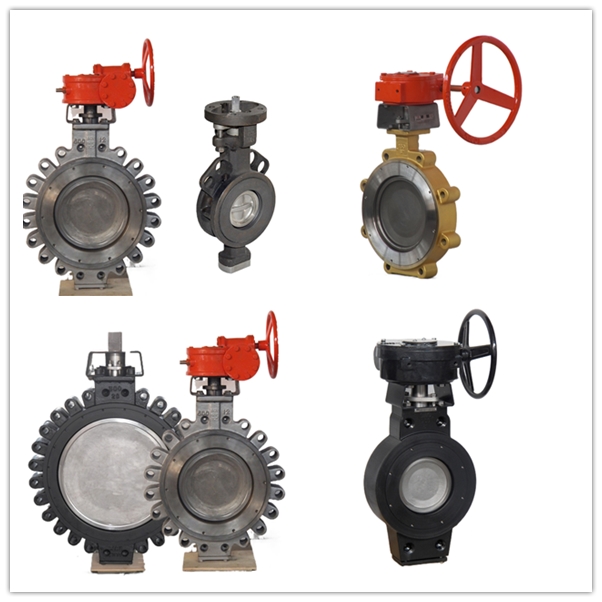
Advantages and disadvantages of each type
Each type of lug butterfly valve comes with both advantages and disadvantages based on its specific design. Concentric valves have the advantage of even weight distribution and reducing wear during operation. Their primary disadvantage is that they are only suitable for low-pressure systems and will not provide an effective seal in higher pressure applications. Eccentric valves have the advantage of providing a tighter seal between the disc and seat, making them suitable for high-pressure applications.
However, this design also results in increased friction between the parts, leading to higher levels of wear and tear over time. Double-offset valves offer improved sealing capabilities compared to standard models but may require more frequent maintenance due to their complex construction. High-performance butterfly valves are constructed from enhanced materials such as ceramic liners, metal seats and triple-offset configurations, which reduce wear while increasing sealing efficiency. It is important to carefully consider all of the pros and cons when selecting a lug butterfly valve in order to select the right valve for any given application.
Applications of Lug Butterfly Valves
Lug butterfly valves are found in a variety of applications, from commercial and industrial settings to residential use. In an industrial setting, lug butterfly valves can be used for controlling the flow of liquids and gases through pipes as well as other process equipment. These valves are often used in systems where pressure changes or interruptions are not desired due to their ability to quickly adjust flow rates while providing tight shutoff. Common examples include petrochemical refineries, power plants, pipelines, water treatment facilities and gas distribution networks. In a residential setting, lug butterfly valves may be used for regulating water flow in irrigation systems or controlling the temperature of spa pools and hot tubs. Other uses include controlling steam flow in radiators and other heating systems, controlling air pressure in HVAC units and regulating the flow of sewage and wastewater. Whether it is for commercial or residential applications, lug butterfly valves provide reliable operation in both low-pressure and high-pressure systems.
Overview of industries and applications where lug butterfly valves are commonly used
Lug butterfly valves are commonly used in a variety of industries and applications. In the industrial arena, they can be found controlling the flow of liquids, gases and other process equipment in facilities such as petrochemical refineries, power plants, pipelines, water treatment facilities and gas distribution networks. For residential applications, lug butterfly valves may be used for regulating water flow in irrigation systems or controlling the temperature of spa pools and hot tubs. Additionally, they can be utilized to regulate steam flow in radiators and other heating systems, control air pressure in HVAC units and regulate the flow of sewage and wastewater. Due to their compact design, quick response time and excellent sealing capabilities, lug butterfly valves are suitable for use in both low-pressure and high-pressure applications.
Explanation of how the valves are used in specific settings
Lug butterfly valves are often used in settings which require quick and accurate regulation of liquids or gases. For example, in petrochemical refineries, lug butterfly valves may be used to control the flow of crude oil into various holding tanks during processing. Similarly, they can be used to regulate the pressure of gas through pipelines or within a power plant. In residential applications, lug butterfly valves can be found controlling water flow in irrigation systems as well as regulating temperature in spa pools and hot tubs. They are also utilized for controlling steam flow in radiators and other heating systems, regulating air pressure in HVAC units and managing the flow of sewage and wastewater. Their ease-of-use makes them ideally suited for both low-pressure and high-pressure applications.
Advantages and Disadvantages of Lug Butterfly Valves
Lug butterfly valves offer numerous advantages when compared to other valve types. Firstly, they are well-suited for use in low-pressure and high-pressure applications due to their excellent sealing capabilities and compact design. Secondly, lug butterfly valves have a quick response time, meaning that they can open or close rapidly with minimal pressure drops. Additionally, due to their ease of installation, they can be used in a number of settings such as petrochemical refineries, power plants, pipelines and residential applications. Finally, they are relatively cost-effective when compared to other valve types.
However, there are also some potential disadvantages associated with the use of lug butterfly valves. Firstly, these valves may experience leakage at higher pressure levels or temperatures. Secondly, it is possible that these valves may not provide sufficient control during start up or shut down cycles in some cases. Finally, lug butterfly valves require frequent maintenance which can cause operational costs to rise significantly over long periods of time.
Discussion of the pros and cons of using lug butterfly valves vs. other types of valves
When it comes to deciding between lug butterfly valves and other types of valves such as gate valves, globe valves, ball valves and others, it is important to consider the pros and cons associated with each type. Lug butterfly valves are generally well-suited for applications which require quick flow regulation and have an excellent sealing capability. They are also relatively compact when compared to other valve types which makes them easier to install in tight spaces. However, they require frequent maintenance in order to ensure optimal performance and leakage may occur at higher pressure levels or temperatures.
On the other hand, gate valves are well-suited for applications requiring very low pressure drops but lack the fast response time typically associated with butterfly valves. Globe valves can be used for a wide range of applications but have a complex internal structure which can make installation difficult. Ball valves provide superior control capabilities but tend to wear out easily over time due to the constant contact between the ball and seat. Each type of valve has its own unique set of advantages and disadvantages so it is important to weigh all these factors before making a final decision.
Consideration of factors such as cost, maintenance, and efficiency
When considering which type of valve to use in a particular application, there are several factors that need to be taken into account. Cost is always an important factor to consider, as different types of valves can vary significantly in price. Maintenance is also key, as some types of valves require more frequent maintenance than others. Finally, efficiency is another important factor when selecting a valve; some types are better suited for applications requiring greater control or lower pressure drops than others. All these factors need to be taken into consideration before deciding on the best type of valve for a specific task or application.

Conclusion
In conclusion, it is clear that lug butterfly valves offer many advantages compared to other types of valves. They provide excellent sealing capability and can be used for a wide range of applications. Lug butterfly valves are generally easier to install in tight spaces and require less maintenance than other types of valves. The fact that they have a fast response time makes them ideal for applications which require quick flow regulation. However, it is important not to forget the potential drawbacks such as leakage at higher pressure levels and temperatures. Ultimately, the decision on which type of valve should be used comes down to weighing up all the pros and cons associated with each type and making an educated decision based on the specific requirements of the application or task.
Recap of the different aspects of lug butterfly valves covered in the post
This post has covered all the important aspects of lug butterfly valves, from their advantages such as easy installation and low maintenance requirements to the potential drawbacks like leakage at higher pressure and temperature levels. We have discussed the types of applications where lug butterfly valves are best suited, as well as the factors to consider when selecting one for a specific task or application. Finally, we have provided an overview of what differentiates this type of valve from other common types, such as ball valves and gate valves. Taking all these aspects into account will ensure that you are able to make an informed decision about which type of valve is best for your particular needs.
Final thoughts on the importance of lug butterfly valves and their continued use in various industries
Lug butterfly valves remain a popular choice due to their affordability and adaptability in tight spaces. Despite potential drawbacks such as leakage at higher pressure levels, they are still the preferred option for many applications across various industries. This is because of the combination of low cost and high efficiency that these valves provide. In addition to this, their fast response time makes them ideal for tasks that require quick flow regulation or frequent flow adjustments. As such, it is important to take into consideration all aspects before choosing the most suitable type of valve for the job at hand.


